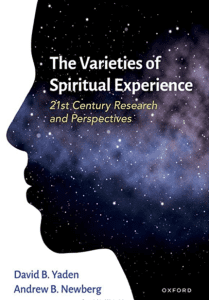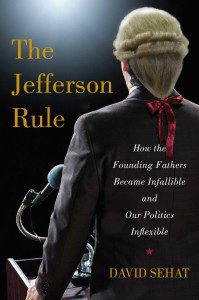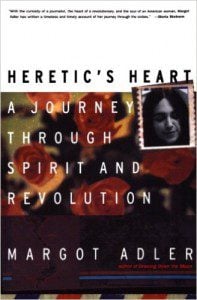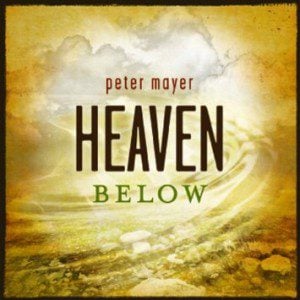In 1962, only a couple of years after I was born, pollsters found that 2% of Americans claimed to have had a “mystical experience” of God. In 1976…that number had risen to 31% of the population…. By 2009, 48% of Americans confessed that they had had a mystical encounter with the divine. …Not everyone who has experienced [the Sacred] afresh is an evangelical, fundamentalist, or Pentecostal. Indeed, they hail from many sorts of faiths…. What if the 1970s were not simply an evangelical revival like those of old, but the first stirrings of a new spiritual awakening, a vast interreligious movement…. This transformation is what some hope will be a “Great Turning” toward a global community based on shared human connection, dedicated to the care of our planet, committed to justice and equality, that seeks to raise hundreds of millions from poverty, violence, and oppression…. In the last decades, this shift has accelerated exponentially, sweeping millions more into both discontent and the longing for change.
Diana Butler Bass
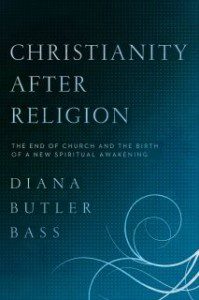 What do you know is true because you have experienced it for yourself? This question is one way of beginning to reflect on the First Source of Unitarian Universalism: “Direct experience of that transcending mystery and wonder, affirmed in all cultures, which moves us to a renewal of the spirit and an openness to the forces which create and uphold life.”
What do you know is true because you have experienced it for yourself? This question is one way of beginning to reflect on the First Source of Unitarian Universalism: “Direct experience of that transcending mystery and wonder, affirmed in all cultures, which moves us to a renewal of the spirit and an openness to the forces which create and uphold life.”
The turn-of-the-twentieth-century American philosopher and psychologist William James in his book The Varieties of Religious Experience approaches this idea from a different angle. He says that established religious communities are based, for the most part, on secondhand tradition, “but the founders of [religious traditions] owed their power originally to the fact of their direct personal communion with the divine.” James not only laments religious communities that ground authority in secondhand tradition, but also calls for the cultivation of firsthand religious experience.
The Unitarian Universalist decision to foreground direct experience as the first of the Six Sources is significant when viewed through the lens of history. Many religious traditions, especially in the West, have historically located the source of religious authority in tradition (what people in the past allegedly did and believed) and in hierarchy (what religious leaders say to do and believe). But as Yale historian Jaroslav Pelikan warned in his 1983 Jefferson Lecture, we must be wary of instances when tradition (which he defines as “the living faith of the dead) devolves into traditionalism (“the dead faith of the living”). From this perspective, tradition is a life-giving source of inspiration for those of us alive today, whereas traditionalism at its worst results in zombie-like obedience to the past and a repression of creativity. But emphasizing direct experience as the First Source is a strong protection against traditionalism. If a tradition rings hollow to you as “dead faith,” the First Source invites you to seek a meaningful experience elsewhere, perhaps from one of the other five sources.
And for many centuries the predecessors of contemporary Unitarian Universalism have challenged religious traditionalism by refusing to deny the veracity of their direct experience. In the mid-16th century, Michael Servetus rejected the doctrine of the Trinity in the wake of his direct experience studying the Bible for himself. He was stunned to discover that the New Testament does not require a belief in the Trinity. And he was burned at the stake for heresy. In response to this wrongful death, Sebastian Castellio, a Christian preacher who did not share Servetus’ theology, courageously spoke up about his wrongful execution: “To burn a man is not to defend a doctrine. It is to burn a man.”
This point should seem obvious today in our more Enlightened times, but the shooting at the Sikh gurdwara in Wisconsin is an all too frightening case of history repeating itself. Echoing Castellio’s sentiments from more than 500 years earlier, some of you may have seen the quote circulating this past week on Facebook that, “I was gonna post something that would tell you the difference between Hindus and Sikhs and Muslims but I realized that you don’t need to know anything about somebody’s religion to know that you shouldn’t shoot them.” This sarcastic response is at its core a plea to recognize the common humanity beneath our surface diversity. It is a call for all people recognize, at a a fundamental level, that every human being has an inherent worth and dignity.
Moving from Servetus’ 16th-century martyrdom to the 18th-century, Joseph Priestly was another brilliant Unitarian Universalist forebear persecuted for his beliefs. His direct scientific experience led to the discovery of Oxygen, and his direct religious experience led him to reject orthodox tradition and belief.
Ralph Waldo Emerson similarly courted controversy in his landmark 19th-century address to the graduating class of Harvard Divinity School. He commissioned that group of newly minted ministers not to base their preaching on tradition and external authority, but on their direct experience. He challenged them to “cast behind you all conformity, and acquaint men at first hand with deity.”
Likewise, from Copernicus to Darwin to today, Unitarian Universalists and their predecessors have been among the first to adapt religion to the teachings of science, which is based on the direct experience of empirical, observable, and repeatable evidence. They knew scientific evidence as truth because they could witness it firsthand for themselves.
~ ~ ~
There are many other significant and moving stories to share from Unitarian Universalist history, but I would also like to share with you a story of what I know to be true because I have experienced it for myself. During my junior year in college, I had the opportunity to participate in a six-week travel study to Egypt, Jordan, Israel, and Italy. I quickly learned that studying Islam from a textbook in South Carolina is incomparable to the full-color reality of the Muslim world. I was accustomed to church bells ringing on Sunday mornings. But in Egypt, I was woken up each morning by the muezzin’s call to prayer. Echoing through the streets of Cairo at dawn were these words:
God is great. I bear witness that there are none worthy of worship except God. I bear witness that Muhammad is the Messenger of God. Come to prayer. Come to success. Prayer is better than sleep. God is great. There is none worthy of worship except God.
And aided by the electronic amplification systems of our modern age, it is a loud sunrise call to prayer.
In the Middle East, I found myself part of a religious minority, and suddenly I realized more viscerally than I ever had before just how ignorantly I must have treated religious minorities in the past: the times I must have failed to explain terms or rituals that were obvious to insiders, made unintentionally offensive comments, or failed to ask my friends if I could learn more about their religious traditions and experiences. Stepping into the Muslim world in Egypt and Jordan, the Jewish world in Israel, and the Roman Catholic world in Italy gave me a fully embodied, firsthand immersion in many diverse religious experiences. That’s transformative direct experience. That’s the First Source in action.
There are other stories I could share with you, like the time I was reprimanded for wearing shoes in the sanctuary of a Hare Krishna Temple in Dallas, Texas — or when I was accosted at the Wailing Wall in Jerusalem because I had long hair at the time and an Orthodox Rabbi thought I was a woman trying to pray on the men’s side. But the larger point is the how transformative direct experience can be.
Feminism, for example, has been defined as the paradigm shift from seeing male experience as normative to taking women’s experience as an equally valid criterion of authority. And seeing women in power from Supreme Court Justices to senators to female pastors and CEOs, that’s transformative direct experience. That’s the First Source in action.
My wife Magin and I were hiking in Switzerland a few years ago on vacation, and we passed a sign on the trail marking where a nearby glacier had ended in 1979. We kept walking and eventually passed a sign marking where the glacier end in 1991, then 2002. Finally we came to the glacier itself. I’ve seen deeply troubling footage of the polar ice caps melting, but seeing that glacier’s recession for myself was a renewed personal call for me to redouble my focus on reversing climate change. That’s transformative direct experience. That’s the First Source in action.
I’ve lost count of the number of my acquaintances, friends, and family members who finally “evolved” in their position on same-sex marriage when a son, or daughter, father or mother, aunt or uncle, brother or sister, best friend or favorite teacher or coach came out of the closet. That’s transformative direct experience. That’s the First Source in action.
And some of you my have seen the moving photo of President Obama leaning down at a little African-American boy’s request to touch and feel if the President’s hair felt like his hair. That’s transformative direct experience. That’s the First Source in action.
Moving to direct experience in the religious realm, as much as I enjoy reading about Buddhism, I feel equally drawn to sit zazen and test the truth of the Buddha’s teachings in the crucible of my own firsthand experience. As much as I enjoy reading Carl Jung’s journals, I feel equally drawn to record my own dreams and test his theories of dream interpretation against my own direct experience. The First Source rightly reminds that, whenever it is possible and prudent to do so, each individual should test the truth of any teaching, asking “Can I confirm this truth-claim with my own firsthand experience?” Doing so can be transformative.
Accordingly, one of the many aspects of Unitarian Universalism that speaks to me most strongly is that the First Source is direct experience. And I encourage you to cherish and cultivate direct experience, so that you can judge truth based not on the secondhand testimony of myself or any other religious leader, but based in the crucible of your firsthand, direct experience.
~ ~ ~
Now, having spent some time discussing the First Source of direct experience in theory, in the history of Unitarian Universalism, and in my own life, I would be remiss if I did not invite you experiment with the First Source for yourself. I invite you to do so through a brief guided meditation, but please only enter into this experience to the extent that feels right to you.
This meditation is adapted from a book called the Philokalia, which translated from the Greek means, “the love of the beautiful.” It is an anthology of writings from monks in the hesychast tradition, which means “rest, quiet, or silence.” I invite you to test in your direct experience if the meditation through which I am going to guide you results in the same sort of inner stillness that these ancient monks from the East claimed.
The following quote adapted from the Philokalia will give you a preview of the meditation’s structure:
So long as [meditation] remains in the head, in the intellect…it is incomplete and imperfect. It is necessary to descend from head to heart — to “find the place of the heart,” to “bring down the mind into the heart,” to “unite the mind with the heart.” Then [meditation] will become [not only mindfulness, but heartfulness] — the prayer not of one faculty only, but of the whole [human being], soul, spirit and body: the prayer not only of our intelligence, of our natural reason, but of the spirit with its special power of direct contact with God [or the whole of reality].
Before we begin, if you are comfortable doing so, I invite you to sit up straight, with your feet flat on the floor. Close your eyes, and take a deep breath in through your nose…and out through your mouth. Try to imagine a line that extends directly back behind your eyes. Then imagine a line that runs between your ears. Picture where those two lines meet: directly behind your eyes and between your ears. Gently focus your attention on that space.
Some wisdom teachers call this space the “Sixth Chakra” or the “Third Eye Chakra.” If that imagery is helpful for you, I invite you to picture your “third eye” opening as you focus on that space. If that imagery is not helpful, simply focus your attention gently on that space directly behind your eyes and between your ears.
Now imagine that you are slowly walking down a long, “spiral staircase” — slowly, step-by-step. This long, spiral staircase begins in your mind in that space directly behind your eyes and between your ears, and winds slowly down to your heart. Imagine yourself beginning to slowly descend this staircase. With each step, let go of your worries and thoughts. Give yourself permission to sink into the hidden chamber of your heart.
In a few moments I will ring a bell, and we will enter into a time of silence. After two minutes, you will hear another bell, signaling the end of the meditation. For now, take your time walking down that spiral staircase. Allow your mind to descend into your heart. Silently rest in this place where mindfulness meets heartfulness.
Appendix: Chalice Lighting
Last Sunday afternoon, the news began to spread about the tragic shooting at the Sikh temple in Oak Creek, Wisconsin. As our Unitarian Universalist President Peter Morales has said:
I join all Unitarian Universalists in expressing my compassion and in praying for comfort and healing…. [But] As we move forward in the weeks and months ahead, we must do more than express compassion. We must reflect on what conditions make repeated acts of deranged violence possible and take action. The killings we keep witnessing in America are symptoms of a culture that is too tolerant of hatred and too reluctant to restrict access to deadly weapons.”
The news of this tragedy evokes memories of the fourth anniversary of the July 27, 2008 Sunday morning shooting at the Tennessee Valley Unitarian Universalist Church, which was targeted because they are welcoming to Lesbian, Gay, Bisexual, and Transgender people and have a liberal stance on many issues.
The Knoxville Community responded with an outpouring of love that inspired the leadership at the Unitarian Universalist Association to launch a “Standing on the Side of Love” campaign that would harness love’s power to challenging exclusion, oppression and violence based on sexual orientation, gender identity, immigration status, race, religion, or any other identity.
So in the spirit of solidarity with our Sikh sisters and brothers and with a commitment to “Standing on the Side of Love,” I invite you to hear this reading from the interfaith advocate Eboo Patel:
The shooting in Oak Creek reminds us that the forces of prejudice are loud. They sling bigoted slurs and occasionally bring 9mm guns to places of worship. But we are not a country of Wade Michael Pages.
We are a country whose first president, George Washington, told a Jewish community leader that “The Government of the United States…gives to bigotry no sanction, to persecution no assistance.”
We are a country where Jane Addams welcomed Jewish and Catholic immigrants streaming in from Eastern Europe in the 19th century as citizens, not as strangers.
We are a country where a young black preacher, Martin Luther King, Jr., learned nonviolence not only from Jesus Christ, but also from an Indian Hindu named Gandhi and from a Buddhist monk named Thich Nhat Hanh.
And we must be a country where a new generation of leaders rises up to write the next chapter in the glorious story of American pluralism, or else we will forfeit the territory to those who would shoot at our neighbors while they worship.
Notes
1 Diana Butler Bass, Christianity After Religion: The End of Church and the Birth of a New Spiritual Awakening, 3, 5. For more, see my blog post, “How to Decide If You Should Read Diana Butler Bass’ New Book,” available at http://www.patheos.com/blogs/carlgregg/2012/02/how-to-decide-if-you-should-read-diana-butler-bass-new-book/.
2 William James, Writings 1902-1910: The Varieties of Religious Experience / Pragmatism / A Pluralistic Universe / The Meaning of Truth / Some Problems of Philosophy / Essays (Library of America), 35.
3 Jaroslav Pelikan, The Vindication of Tradition: The 1983 Jefferson Lecture in the Humanities, 65.
4 For the quoted material on Michael Servetus, see David Bumbaugh’s Unitarian Universalism: A Narrative History, 13-14, 17.
5 About Sikhs, by Sikhs, for everyone else: “When writing about Sikhi (commonly, but inaptly called Sikhism), please follow these guidelines: Sikh is pronounced sik-kh (‘kh’ should be pronounced as in Mikhail), not seek or seekh.” Learn more: http://www.sikhcoalition.org/for-the-media-style-guide-and-glossary.
6 Ibid., 90-92.
7 Ibid., 122.
8 G.E.H. Palmer, The Philokalia, Volume 1: The Complete Text, 193. The brackets indicate the places where the quote has been adapted to be more inclusive.
9 I learned the practice of focusing on the meeting point of “a line that extends back behind your eyes and a line that runs between your ears” from Maria Tattu Bowen, one of my professors in the Diploma in the Art of Spiritual Direction program at San Francisco Theological Seminary. She, in turn, was adapting work from her spiritual director Francesa McCartney, Body of Health: The New Science of Intuition Medicine for Energy and Balance, 71-104.
10 I owe the image of a “spiral staircase” related to the Philokalia’s theme of allowing “the mind to descend into the heart” to Mark Yaconelli, Downtime: Helping Teenagers Pray, 73.
11 Note: This Chalice Lighting is adapted or copied directly from the linked articles.
12 Peter Morale, “UUA President Responds to Shooting at Sikh Temple,” available at http://www.uua.org/news/pressroom/pressreleases/218715.shtml.
13 For more on the history of the shooting at the Tennessee Valley UU Church in Knoxville, see http://www.uuworld.org/news/topics/knoxvilleshootings.shtml.
14 For more on the history of the “Standing on the Side of Love” campaign, visit http://www.standingonthesideoflove.org/about/#History.
Click here for the “Standing on the Side of Love” webpage for sharing words of prayer, compassion, or love for the Sikh community.
Also, see Jahnabi Barooah, “Sikhism: 5 Things To Know About The Sikh Religion,” available at http://www.huffingtonpost.com/2012/08/05/5-things-you-should-know-about-sikhism_n_1744657.html?utm_hp_ref=religion.
15 Eboo Patel and Hana Suckstorff, “Sikhs and Sacred Ground,” available at http://sojo.net/blogs/2012/08/07/sikhs-and-sacred-ground. For more, see Patel’s new book Sacred Ground: Pluralism, Prejudice, and the Promise of America.
The Rev. Dr. Carl Gregg is a trained spiritual director, a D.Min. graduate of San Francisco Theological Seminary, and the minister of the Unitarian Universalist Congregation of Frederick, Maryland. Follow him on Facebook (facebook.com/carlgregg) and Twitter (@carlgregg).
Learn more about Unitarian Universalism:
http://www.uua.org/beliefs/principles/index.shtml







